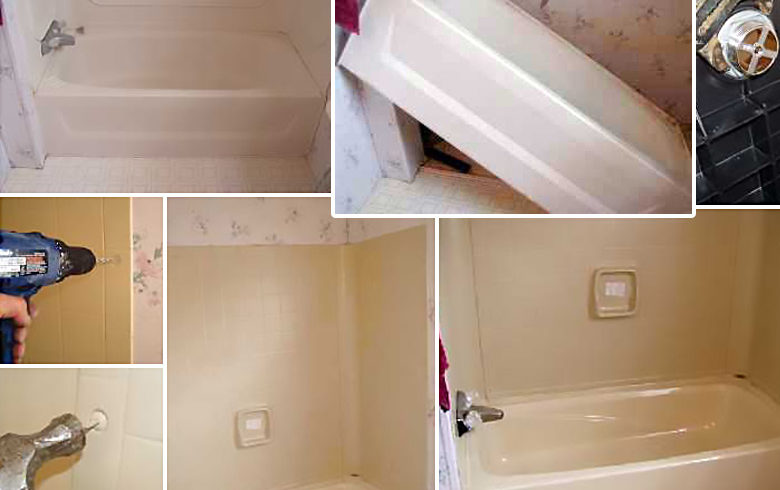{Visit Our Website
Have you been hunting for information on Hiring a Plumbing Company?

Acrylic baths, shower trays, and other acrylic bathroom ware have ended up being extra usual in bathrooms in recent times. Not as sophisticated and durable as enamel and porcelain bathrooms and also components, they are more cost effective and also serve pretty much the very same fundamental function. Some usual instances of damages to acrylic washroom components consist of staining, fractures, holes, etc.
Scratched shower or bathroom surface
Polymer bathroom components are not abrasion-resistant like enamel selections. Being a very soft product, acrylic scratches can also be concealed without finishing or dental filling. For these, you need to seek professional assistance for your bath repair work.
Chain reaction
Occasionally, individuals try to paint the whole surface area of their acrylic bathroom by themselves either due to the fact that they do not such as the shade to hide acnes. You ought to never use paint eliminator on acrylic bathrooms. Paint removers do not react with the surface of steel baths, they destroy acrylic bathrooms irreversibly.
Bathroom Staining
With long term use of acrylic baths comes discoloration or staining. While some spots can be gotten rid of easily, using special chemicals, others call for that the bathroom be resprayed. Aromatherapy oils loosen up the dust in some instances therefore restoring the bathroom to its previous magnificence.
Cracked Acrylic Baths
The lifespan of acrylic and also fiberglass bathrooms is up to 15-20 years for shower pans and also baths, normally. Cracks in an acrylic shower tray are possibly among the easiest issues to fix for a repair service specialist. This is the very same for PVC, material, and also various other such materials.
Acrylic baths, shower trays, and also various other acrylic washroom ware have ended up being more usual in restrooms in current times. You must never ever use paint remover on acrylic baths. Paint cleaners do not react with the surface of steel baths, they ruin acrylic baths irreversibly. With long term use of acrylic bathrooms comes staining or discoloration. The life expectancy of acrylic as well as fiberglass baths is up to 15-20 years for shower frying pans as well as bathrooms, generally.
How to clean Acrylic shower
USE THESE NON-ABRASIVE CLEANERS
We recommend that you clean your acrylic bathing product made of Delta ProCrylic or Acrylic with Innovex Technology with non-abrasive soaps and cleaners, such as:
- Dishwashing detergent
- Power Bathroom Cleaner
- CLR® Bath & Kitchen® Cleaner
- Formula 409® All-Purpose Cleaner
- Iron Out® Rust Stain Remover
When it’s time to clean, always use a terry cloth towel, soft cloth or sponge to avoid scratching the acrylic surface. Don’t use abrasive scrubbing pads, steel wool or sponges, cause permanent damage to the acrylic material. If you use a drain cleaner or clog remover, be sure to rinse thoroughly with water so no product is left standing near the drain.
Some chemicals and cleaners may deteriorate acrylic surfaces, causing cracks and, potentially, property damage. To avoid this, don’t use cleaning products that state on their label that they are not suitable for use on Acrylic, ABS, Polystyrene or Plastic. Be sure to check the label of any product before you apply it to the surface; it’s easier to avoid damage than to try to remedy it.
DO NOT USE THESE CLEANERS
Chemicals we do not recommend using to clean acrylic showers/tubs:
- Solvents (turpentine, lacquer thinner, mineral spirits, paint thinner, MEK, xylene, acetone, naphtha, etc.)
- Simple Green® All-Purpose Cleaner
- Pine-Sol® Original
- Scrubbing Bubbles® Cleaner
- Tilex® Bathroom Cleaner
- The Works® Tub & Shower Cleaner
- Lysol® with Hydrogen Peroxide Multi-Purpose Cleaner
- Windex® Vinegar Multi-Surface Cleaner
Sealant Application Tips
When you’re ready to apply sealant, a little planning goes a long way. Pick up some painter’s tape and use it to mask off the seam to help make cleaning up easier. When you’re applying the bead, use a constant, steady speed to avoid an uneven finish. Use a caulk tool or a plastic spoon to work the sealant into the joint. Wetting the tool with denatured alcohol will help create a smooth finish. Follow the directions on the back of the tube for cure time.
Certain chemicals and cleaners may deteriorate acrylic surfaces, causing cracks and, potentially, property damage. After you’re finished applying it, clean up the product surface and remove any excess sealant with denatured alcohol. Don’t use solvents (turpentine, lacquer thinner, mineral spirits, paint thinner, MEK, xylene, acetone, naphtha, etc.) that can wreak havoc on an acrylic surface.
With a little care and consideration, you can prevent damage to your acrylic shower or tub. Keep a supply of soft cloths handy and remove any damaging products or abrasive scrubbing items from the bathroom to ensure they aren’t around when it’s time to clean.
https://www.deltafaucet.com/design-innovation/inspiredliving/how-to-clean-acrylic-shower

I am very fascinated with Finding the Right Plumbing Expert and I'm hoping you appreciated our blog posting. Those who enjoyed our blog posting plz be sure to share it. Thank-you for your time spent reading it.
Request A Quote
Comments on “5 Points Nobody Tells You around Shower & Tub Wall Panels”